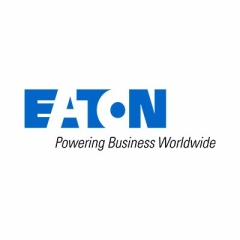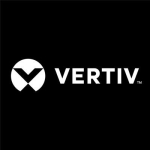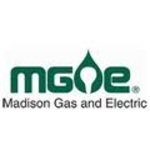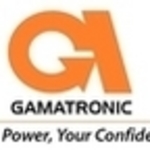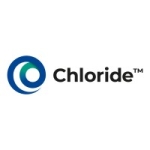What is our primary use case?
Our primary use case is mission-critical: data centers, communication closets, building automation systems, our utility plants. All our critical systems are run on Eaton.
Our organization has over 20 three-phase units. We've got the 9395s and a 9355s, the 480V three-phase and the 120V three-phase. Looking forward to leveraging 93PM and the next generation of products
How has it helped my organization?
Their UPSs do their job. The argument goes that you find out that UPSs fail when you need them. Knowing these units are going to work allows me to sleep at night. I have a proven track record with them. They just always work. I've never had a problem, not power glitches, nothing. That is exactly what they're supposed to do.
What is most valuable?
The two things that I like are the ESS, its related components, and the bypass sync, which means if there's a problem with the UPS I can mechanically wrap around it without going to static bypass. Eaton has one of the few units on the market that will do that.
Because we're running mission-critical loads, in the event I have a failure of the UPS where I can't go to static bypass before I go to maintenance bypass, I'm screwed. I risk losing the entire load. The Eatons allow me to go to maintenance bypass, which means paralleling on an alternate power source, and then take the UPS out without static. So if I have a failure, there is a minimal risk of losing a data center to repair the UPS - and that has saved me at least once. I had an alternate vendor where I wound up spending about $180,000 in mitigation - we had to provide temporary power, staffing, and a great deal of time coupled with risk because the UPS had a fault and I couldn't go to bypass.
The alternate vendor's K13 contactor failure meant I could not go to static bypass safely. There was a 50/50 chance a unit would drop the load. On my Eaton, we had a component failure where it was unclear what the unit was doing. It was still maintaining load. I don't remember specifically what the part was, but it was one of the control systems. We were concerned that going to static bypass would have been problematic and Eaton Field Engineer said, "But it's not an issue, you can go to maintenance bypass and then we can fix it."
We learned the issue was resolved with a firmware upgrade It was never an issue. Though concerned if I moved the UPS to static bypass it would drop the load. Because of the way the Eatons work, I simply could have gone to maintenance bypass and never have had an issue. That means I would have had a mission-critical room that I don't lose.
One of the other key features that I like is ESS (Energy Saver System) for it's cost avoidance. What it allows the unit to do is run on utility power. The UPS units are smart enough and fast enough that 99 percent of the time, if utility power is clean, the UPSs operate on utility power allowing the batteries to rest. Because the batteries are resting more than being drained in double conversion, we have seen battery strings operate 8+ years without issue. Normally UPS batteries are replaced every three to four years. I can now get six to eight years out of the batteries providing for a large cost avoidance. When you're looking at a million-dollar battery replacement, to be able to push that out three years is an enormous saving. That's on the VRLAs. With Lithium-Ion advances and cost reductions we are looking at a large paradigm shift to this model.
The reason I stay with Eaton is consistency and reliability, and also the service organization. To me, Eaton provides some of the best service. I use the manufacture for my big iron. I do not use third-party maintenance for Critical Load situations. One, Eaton's been very competitive for me. There have really been no cost savings utilizing a third-party. An advantage of using the manufacturer for service is direct access to engineers. If there is an issue, and everyone will have an issue at sometime, the field techs call the Eaton engineers. By leveraging the manufacturer access to parts is a given! If there is an issue I don't want to wait for people to show up or argue the issue.
VMMS is a good feature. There are multiple charging units inside each UPS. For example, on my 9395 I have three to four charging units. The units are at full capacity the charging units will rotate on and offer similar to a lead/lag model. This saves energy as well stages to meet capacity.
Most of my units are large, 480v, three-phase units. The industry is working to reduce footprint which is valuable. Units are getting more dense and feature rich. Advances in transformerless and Lithium-Ion are game changes.
What needs improvement?
The biggest improvement I would like to see is the remote monitoring and management. All the interfaces should match. The unit touch screen, Web interface, and other remote options should provide the same information and it can never be enough! Presently the touch screens and web based interfaces look and function differently. I want to know what this unit is doing. I want to be able to track and trend the data. .
The only other features I would like to see are technology improvements, which they're doing anyway. At what point do you go to transformerless? At what point do you have better caps?
UPS operate in a simple matter. improvements in software, contactors, coupled with transformerless and Lithium-Ion are disruptive technologies. All the vendors are doing it and making it available. From an improvement perspective, they're on the right path. There isn't anything major that I can jump up and say, "I wish you would do this better."
On the single-phase units, I'd like to see ESS and Lithium-Ion through the produce line down to the 50k units. These are coming!
Buyer's Guide
Eaton UPS
October 2025
Learn what your peers think about Eaton UPS. Get advice and tips from experienced pros sharing their opinions. Updated: October 2025.
868,787 professionals have used our research since 2012.
For how long have I used the solution?
I've been using Eaton UPSs going on 14 years.
What do I think about the stability of the solution?
What do I think about the scalability of the solution?
The units I have are scalable, to a point. When putting in large units you spec for what the target capacity is. In the end one may delay some charging modules but all the core infrastructure, cable, footprint, etc, must be in place day one. If I'm buying one of these big 9395 units, I'm buying half-a-megawatt plus. Eaton makes a lot of scalable units. They make the 93PM and the 9395 now has some great options for scalability.
The problem with scalability is, while they all do it, you're going to pay for it. If I'm going to go into an environment where I don't know what my load is going to, I don't want to buy two-and-a-half meg on day-one because I don't need it. But you've got to build everything for that on day-one: all the cables, the battery plans, the breakers; the frame has to be there.
If you're willing to spend that, then great. Most of the time, even in today's environments, it's the little ones that are scalable. You can start out with 25 Kw and go to 150. But if I want to start out at half-a-meg, and I'm going to scale to two meg, that's a different animal. I can do that with both of them. If I'm willing to pay for it, they have options.
Do I think Eaton has scalable products? Yes, I do. And they met the needs that I have had in the past. Do I see value in scalability? I have yet to realize in my environments.
How are customer service and support?
The Service Plan doesn't result in faster repair time because my repair times are so fast anyway. I've got four-hour response times on my units. If I have a problem with the unit, I get somebody here, 24/7, within four hours.
One of the beauties of their sales team is they build relationships, so I'm not always calling an 800-number saying, "Hey, I need help," where the reply is, "Okay, where are you? What time zone are you in?" I can call my technicians 24/7 and say, "I have a problem" and they are on the way! Granted there is little concern as I am under contract. Eaton's service team in the Chicago Metro area is a very personable team, all the way up to the VP of Service. They're focused on customer service and it shows in the relationships I've had with them.
The last issue we had a technician come down for was a battery issue. Sadly the issue was me not interpreting the alarm appropriately which simply had to be cleared. They came out and took the time to teach me.
Another time I got a UPS wet and blew it. That was exciting. We had a leak. It actually leaked through a 12-inch concrete slab above it. It was like a Rube Goldberg puzzle. We had a leak upstairs that traveled 20 feet across the concrete floor, found a crack, slid through the crack in the floor, into a conduit that's been in the concrete for a hundred years, down the concrete and then out of an abandoned electrical box in the concrete ceiling. It dripped on a piece of Unistrut, slid over about three feet, and dropped on a high-voltage energy bus. You can't make these things up.
The UPS did what it was supposed to do but we got it wet. The UPS went from ESS to double conversion, to bypass, back to double conversion, back to ESS, in 72 milliseconds. The way a UPSs works is if there's a large in-rush, which means a whole bunch of equipment needs a lot of power at once, the UPSs actually lets the utility handle it. In an in-rush, my load will peak up, my draw will peak up. The UPSs will watch the inrush and grab the load when the demand stabilizes. Under normal circumstance all would have been good. Lesson of the day, keep equipment dry!
Which solution did I use previously and why did I switch?
I've have some GE & APC units and I'll tell you the same thing I've told every one of those vendors: When dealing with a product at this caliber, I can't go wrong with any of them. If I buy a Mitsubishi unit or a Liebert unit, they're all good units, bar none. Each vendor will debate why theirs is better bet in the end all will do the job. The key is what is the right product at the time I'm going to buy which meets my needs. Who's got the best feature set, the richest feature set, the best price, and the best capabilities. What is the best return on my money at the end of the day.
Once that's said, it really comes down to the service organization and the reliability of the units. I have had issues with all the products and I am sure everyone out there has as well. It's just I have had fewer issues with my Eatons than they have had with their other vendors.
I also believe in standards. Once I've picked a product line, my first choice for the next unit would be Eaton. There are economies of scale having so many of them.
It comes down to this: When Eaton comes out to service units, they spend two-three days, and can cover them all. I'm not having to multiple vendors and schedule visits which consume my time. I have one throat to choke, one contract, and one great relationship. As a corporation, they still have the flexibility to be able to deal with the customer in that manner. Today, their service and customer relationships are their biggest value, absolutely, compared to the competitors I deal with.
The Eaton service organization is one of their strongest points.
How was the initial setup?
I'm not an engineer or an electrician. For me, the ease/complexity of the setup is a hard question to answer because the field people do it. My observations are based on watching my electricians install my units and watching and working with the field engineers through the startup. It seems relatively straightforward. Plug component A into component B, run a wire from this terminal to that terminal. It seems very straightforward.
When the field techs have to do startups, it takes time to work through the details. This is all scheduled! When you're putting one, two, or two-and-a-half megawatts of UPS, there's an enormous amount of potential energy and danger. If they want to take a day or two to put these things in, I'm not going to argue with them, because I want it done right.
The installation depends on how fast you can put a 1000's of pounds of equipment. You've just got to put big, heavy things in place and run big thick, heavy wires. You're running two dozen wires that are as big as your thumb and they're heavy; the wire is two-and-a-half pounds a foot. It's a lot of man-handling but I would say it's been relatively straightforward.
Is Eaton any better or different than any other UPS vendors on the market? From providing backup power not really. From how they do it, I can only say they have treated me well!
What was our ROI?
ROI is an extremely hard number to quantify. If a data center goes offline, the teaching and learning process at the University, and all the financial systems, hiccup. It would inconvenience an enormous amount of people. Some people would not teach because they can't get to electronic data. The cost of how many people would really go idle is difficult to calculate.
Where the recovery comes in, with the amount of people involved, the numbers could get into the $70,000 s to $100,000 an hour number simply having faculty and staff idle people. It starts to add up.
In a previous position we calculated downtime at about $60,000 an hour, depending on the plant. Just idling staff cost that much. In higher-ed, what's more critical to the impact than idling people is the data. I have to protect the data. There are people whose life's work is literally sitting on a computers in one of my data centers. A faculty member who spent his entire life researching a subject may have his data sits on a computer in my data center. If that computer has a problem, he literally can lose his life's work. Granted backups should be in place and normally are.
What's my experience with pricing, setup cost, and licensing?
When you bid these large units I fin them all within a single-digit percentage point of each other. I can't make a bad decision. It's just what's the right decision at that moment in time? They're all cost-competitive.
I do pay for a service contract to Eaton every year. I do it through a third-party, but it's all Eaton paper. We do that because of the Ts and Cs - getting contracts mutually agreed to with all the legal teams is challenging thus I leverage a third party to help with this. I have the luxury of dealing with Eaton direct or leverage my VAR as needed. Either way communications between all parties is strong!
What other advice do I have?
If you're thinking of implementing Eaton, reach out to their customers and then go talk to them. I make myself available to Eaton, nationwide. If they want to see my systems, I'll talk to them. I tell them good and bad. Eaton's not perfect. We've had a couple of bumps in the road, but we worked together and we've solved them, in a very positive.
You're going to have problems. The key is you judge character: how do you respond in a crisis. When I went out to bid recently, I even told Eaton: "It's pretty hard to negotiate when I'm telling all my bidders they have to come to you for my big-iron contracts." Eaton could have taken advantage of the situation but did not! They continue to be competitive.
The biggest lesson I've learned from using these UPSs is that you get what you pay for. The one-sentence summary of the value of the Eaton is that I sleep well at night.
Eaton's lithium-ion batteries were not a factor in our decision to go with their UPSs. All the manufacturers are buying the same batteries and cabinets.
PredictPulse, in my opinion, is valuable. But I also feel it's overpriced at this time. We monitor, track and trend our units 24x7. If there's an alarm, I get a text and an email and somebody is responding to it. Where PredictPulse is valuable is that it's looking across 10,000+ units and says, "Hey, you know what? We're seeing this component failure," or "Based on this information, we think you should probably fix your caps or change your fans." Or, "We've got a firmware update and we've seen problems. We're putting a fix on our firmware. Next time we're out we'll put this in." That's where it's valuable.
I do like where PredictPulse notifies Eaton Service team if there is an alarm. Having Eaton see the alarm in near real time brings peace of mind. I continue to evaluate PredictPulse. My guess as more customers utilize the price will come down.
The touch screen functionality is fine but to me it's overrated. I don't know why they have it. Well, I do know why they have it because they need to "keep up with the Jones's." It's fine. It does what I want it to do. It tells me all the information. From a practicality perspective, it serves one function: It's a showpiece. Most of us don't touch the panels. I want to monitor remotely and that is a complaint I have. The remote monitoring software does not provide the same information that the touch screen provides and neither provide me the same information that the field techs can draw out of the unit when they directly connect to them.
I use Eaton transformers but I don't use their in-cabinet power strips for one reason. Not because they don't make a good product, but because I use an alternate vendor. The vendor I use fully assemble the cabinet with a number of components and the PDU's at the factor. The cabinet shows up, I roll it off a pallet, and I'm done.
I do have some Eaton PDUs, but I don't have a lot of them. Most of my big breakers are all Eaton. My big step-down transformers in my data centers are Eaton. I'm Eaton, cradle-to-grave, from the utility switchgear coming all the way into my distribution. I've drunk the "Kool-Aid" of Eaton. What it allows me to do is that if I ever have a problem, I get to go to them and say, "Look, the whole thing is yours." It's cradle-to-grave. It's their product.
They're price-competitive and from a technical perspective they're at the top of the game. I could buy Square D, but then I'm buying Square D breakers. I'm buying somebody's UPS and somebody else's distribution and somebody else's paralleling gear. The fact that I can pick up the phone and call one vendor and say, "Here, design this for me end-to-end," and they say, "Okay, not a problem," saves me time and headaches.
I did have a problem with one design. The project fell just short of specifications. After working with the engineering department a solution was put in place. In the end the issue was resolve!
It's hard to say how much downtime the solution has saved our organization because, other than the unit getting wet, long story, I haven't had any power outages in ten years now. The Data Center I have has never been down due to a power outage. We've seen blinks in power transfers from the utility company, but to me it's an unquantifiable number, unless you're seeing really bad power all the time, where you're seeing brownouts and blackouts. I haven't had a power outage in any of the Eaton systems that I have.
In terms of maintenance, somebody comes out twice a year. We do a major/minor PM on all our enterprise UPS units. During the first visit they check the software, the firmware, the alarms. On a "major" they upgrade the firmware. The units have to be shut them down, everything is checked, make sure all the connections are tight, the caps are tight. They do electrical tests, all the capacitors and the electrical components, making sure everything is solid and tight. The battery comes out twice a year, although for the VRLAs I have them come out quarterly. They check every battery, every connection. They make sure the volts and ohms are right, the right resistance. That's one of the reasons these units work so long, because we do a lot of maintenance.
Other than that, we track and trend all our UPS units every few minutes. My operations center watches all our system 24/7. Alarms are reviewed near real time. The care and feeding of these units, to me, is no different than the care and feeding of any other critical system.
I would rate Eaton as a corporation, not the Eaton UPS, as a nine out of ten. In a world like mine, I don't build relationships based on products. I build relationships based on the sales and service teams. If I'm buying a lot of product from a company but the salesperson leaves the company, I will evaluate the value of the my relationship. There is a potential I will follow the sales and service teams. The relationship is with the person, not the company. The Eaton people that have come to the table nationwide have been stellar.
I would rate Eaton UPSs at as a nine as well. There are little things they could do, like fix their interfaces and give me more data.
Disclosure: PeerSpot contacted the reviewer to collect the review and to validate authenticity. The reviewer was referred by the vendor, but the review is not subject to editing or approval by the vendor.

